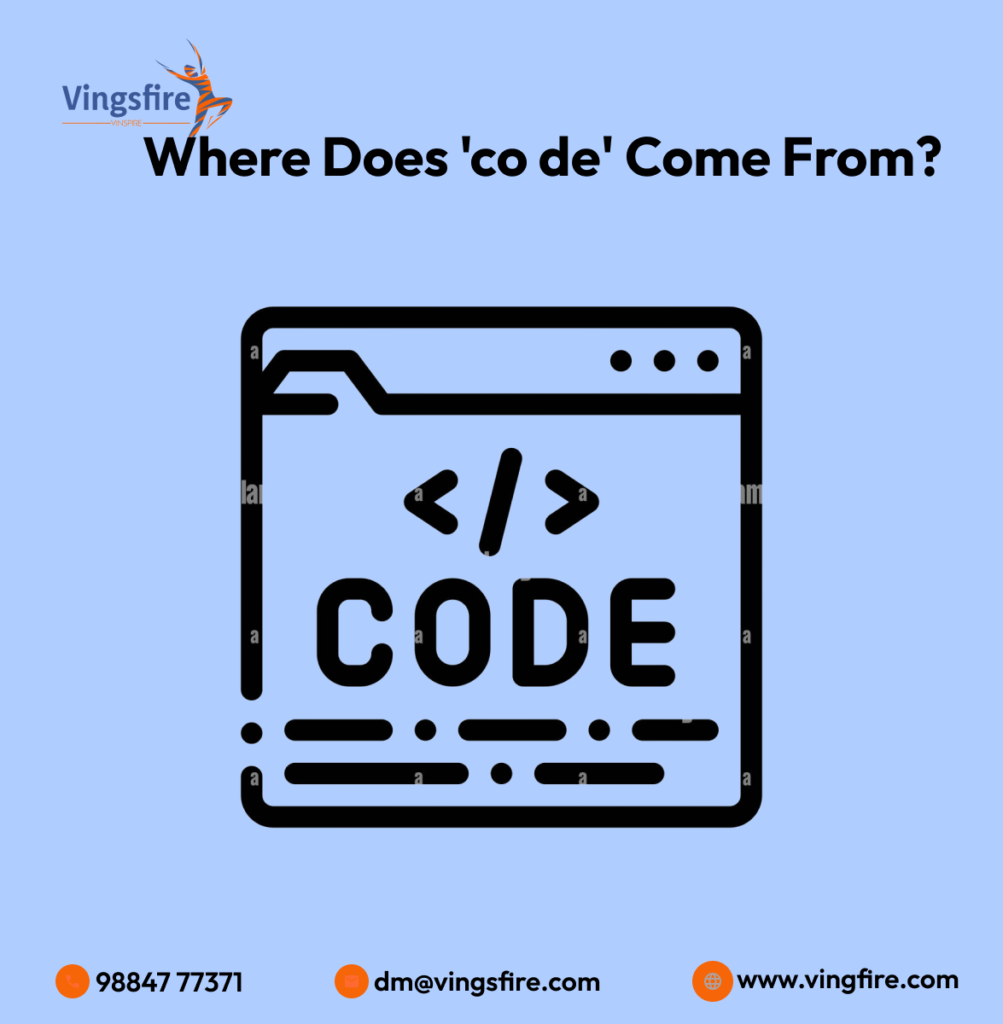
Introduction:
‘Co de’—two simple syllables that have become ubiquitous in our digital age. You’ve likely encountered it countless times while browsing the web, scrolling through social media feeds, or even in casual conversations. But have you ever stopped to ponder its origin? What exactly does ‘code’ mean, and how did it find its way into our daily lexicon? In this comprehensive exploration, we delve deep into the roots of ‘code’, tracing its evolution from its humble beginnings to its current widespread usage.
Chapter 1:
The Genesis of ‘Co de’ To understand the significance of ‘code’, we must first unravel its origins. The term finds its roots in the early days of the internet, emerging as a shorthand for “code” within the programming community. As developers communicated and collaborated online, ‘code’ became a convenient abbreviation, conveying the essence of programming in just two syllables.
Chapter 2:
The Rise of ‘Code’ Culture With the proliferation of social media platforms and messaging apps, ‘code’ quickly transcended its original context and entered mainstream discourse. Memes, hashtags, and internet slang played a pivotal role in popularizing the term, as users embraced its brevity and versatility. Whether discussing software development, fashion trends, or culinary adventures, ‘code’ became a universal language, uniting individuals across diverse backgrounds and interests.
Chapter 3:
‘Co de’ in Pop Culture The influence of ‘co de’ extended beyond the digital realm, infiltrating popular culture in myriad ways. From viral TikTok videos to catchy pop songs, references to ‘co de’ abound in modern entertainment. Celebrities and influencers eagerly adopted the term, incorporating it into their online personas and brand identities. In doing so, they further propelled ‘co de’ into the collective consciousness, cementing its status as a cultural phenomenon.
Chapter 4:
The Linguistic Impact of ‘Code’ As ‘code’ continues to permeate language and communication, linguists and scholars have taken notice of its intriguing linguistic properties. Its brevity, phonetic appeal, and adaptability make ‘code’ a fascinating case study in linguistic evolution. Some argue that ‘code’ represents a form of linguistic innovation, akin to other abbreviated expressions like “lol” or “brb”. Others view it as a reflection of the fast-paced, digitally-driven nature of modern communication.
Chapter 5:
‘Code’ Beyond Borders While ‘code’ originated within English-speaking online communities, its influence knows no linguistic boundaries. Translations and adaptations of ‘code’ have emerged in languages around the world, each imbued with its own cultural nuances and connotations. Whether it’s “kod” in Turkish, “código” in Spanish, or “代碼” in Chinese, ‘code’ serves as a global symbol of connectivity and collaboration in the digital age.
Chapter 6:
The Future of ‘Code’ As we look ahead, the future of ‘code’ appears boundless. Its fluidity and adaptability ensure its continued relevance in an ever-changing linguistic landscape. As technology advances and communication evolves, ‘code’ will likely undergo further transformations, taking on new meanings and contexts yet to be imagined. Whether it remains a staple of internet culture or evolves into something entirely unforeseen, one thing is certain—’code’ will continue to leave its mark on language and society for years to come.
Conclusion:
In conclusion, ‘code’ is far more than just a simple abbreviation—it’s a phenomenon that encapsulates the essence of modern communication. From its humble beginnings in the programming community to its widespread adoption across languages and cultures, ‘code’ has transcended boundaries and become a symbol of connectivity in the digital age.
As we navigate an increasingly interconnected world, let us embrace the power of ‘code’ to unite us in shared understanding and collaboration. After all, in a world filled with complexity, sometimes two simple syllables are all we need to communicate.
